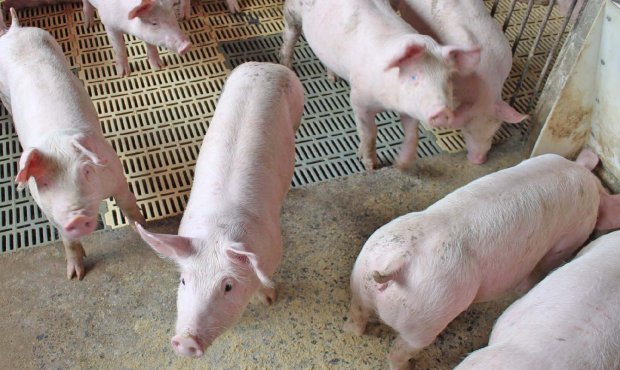Porto Alegre, November 4, 2022 – Prices in the swine chain found good recovery between the beginning of September and the end of the first half of October, with industries and retailers looking for stock replenishment. The expectation is of heated demand in the period of the World Cup and the end-of-year festivities. In this period there is the entry of the thirteenth salary in the economy, a factor that also favors consumption. Another important component is that independent swine farmers are pointing out that, besides the greater demand for live pigs, they have an average weight below the historical record of recent years. On October 27, the average of a live kilogram traded in the Center-South of the country was BRL 6.48, an increase of 9.10% over the closing of September (BRL 5.94). In São Paulo, the rise in the arroba of live pigs was 10.16% in the same period, changing from BRL 128 to 141. However, despite the slightly more favorable scenario for live pigs, margins continue to deteriorate due to the cost of production, which does not fall. The main feedstuff inputs, such as corn and soymeal, were firm in October.
The exchange ratio of pork x corn is still bad in the country. In the southern states, the main producers in the country, the exchange ratio is between 1.35 and 1.50. In other words, with the price of one arroba of pig, you can buy 1.35/1.50 bags of corn. It is worth noting that the corn price is an exogenous factor, and the swine sector cannot expect an improvement in margins but only a decline. Thus, the search for production adjustments is necessary.
The big problem is that the margins must not find healthy levels in the last two months of the year, a period that marks the peak of consumption in the country. Next year will continue to be challenging for the Brazilian pork market due to the trend of high costs, production, and high domestic availability. The first quarter of 2023 must be the most difficult period of the year, considering that consumption slows down, and production cannot be cut abruptly. In addition, it is necessary to observe the price curve of competing proteins (beef and chicken), with the possibility of setbacks also in the period, which is negative for pork, considering that it occupies the third place in the predilection of Brazilian families. The price of corn must remain at high levels in the period, considering a difficult logistic situation due to the priority for the soybean flow. Soybeans must have a bearish picture due to the estimate of record production, of around 151 mln tons. The weather is a variable to be monitored over the next few months to define the crop.
Brazilian pork production is expected to reach 5.218 mln tons in 2023, according to estimates by SAFRAS & Mercado, an increase of 2.9% over the 5.073 forecast for this year. Despite the severe crisis experienced by the sector since last year, there is no sign of cuts, except in the case of the most fragile independent farmers, who are abandoning the activity. The expansion of production by itself is already an indicator that shows difficulties ahead. However, exports also tend to be more difficult, with China and the Philippines getting more retracted in the world market in 2023, first and third in the list of biggest importers of Brazilian pork this year. Brazil must export 1.072 mln tons in 2023, according to SAFRAS, down 1.7% from 1.090 mln estimated for this year.
As described in our latest biweekly report, high prices and positive margins in China have encouraged production to increase since May. The US Department of Agriculture (USDA) announced in the first half of October that Chinese production will increase in 2023, which will reduce the need for imports. USDA estimated Chinese imports at 1.7 mln tons in 2023, down 5.56% from the expectation of 1.8 mln tons in 2022. Another point that deserves attention is the devaluation of the yuan, the Chinese currency, which reached the mark of 7.30 per dollar last week, which must result in greater difficulty for imports. This currency devaluation process already has negative impacts on Brazilian beef. For Brazilian products to remain attractive to China, the real cannot strengthen.
As for the Philippines, USDA estimated that the country’s imports must close at 550,000 tons in 2022, against 461,000 tons last year. For 2023, imports must fall 18.18% and remain at 450 thousand tons. The Asian country must be able to recover part of its production, which has suffered in recent years with African swine fever.
It is also worth noting that, in October, US pork declined and, as a result, became more attractive than Brazilian pork in dollars. Competition in the international market has increased, which is another factor to be monitored.
Given the production and export figures, Brazilian domestic availability is expected to increase by 4.1% in 2023, from 3.982 to 4.145 mln tons. The increase in availability leads to the understanding that the price of live pigs and pork will continue to face difficulties next year, which must weigh on the profitability of the sector. In addition, it maintains a high risk of bankruptcy, especially for independent farmers. High interest rates in Brazil hinder the search for capital, noting that many pig farmers are already indebted due to the prolonged crisis. Thus, the trend is for the market concentration process to advance in 2023.
Follow the Safras Agency on our website. Also follow us on our Instagram and Twitter and stay on top of the main agribusiness news!
Copyright 2022 – Grupo CMA

